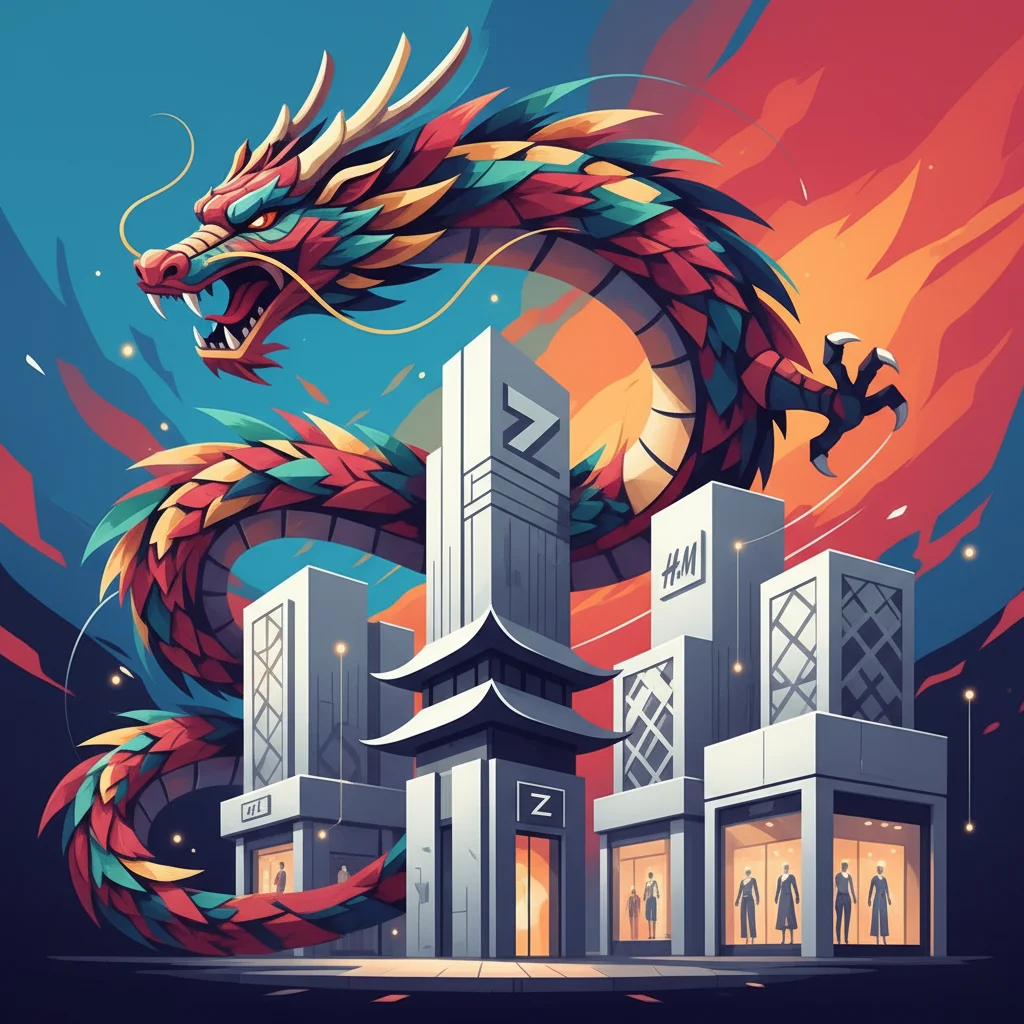
The Dragon on the High Street: Is This Chinese Retailer the Next Zara?
Walk down any major shopping street from London’s Oxford Street to New York’s Fifth Avenue, and the landscape is comfortingly familiar. The towering storefronts of Zara and H&M have long been the undisputed titans of fast fashion, their global dominance a testament to a powerful, Western-led retail formula. But a new challenger is quietly setting up shop, and it comes not from Europe or America, but from the heart of China’s manufacturing powerhouse. Meet Urban Revivo (UR), the Chinese fast-fashion retailer with a war chest, a sophisticated supply chain, and an audacious plan to take on the giants in their own backyards. This isn’t just a story about clothing; it’s a narrative about a seismic shift in the global economy, with significant implications for the stock market and international investing strategies.
From Guangzhou to Global: The Unseen Rise of Urban Revivo
While Western consumers may be unfamiliar with the name, Urban Revivo is a colossal presence in its home market. Founded by the ambitious Li Mingguang, the brand has cultivated a sprawling network of over 400 stores across China, positioning itself not as a bargain-basement option, but as “light luxury.” This strategic niche allows it to offer trend-led designs with a more premium feel than its competitors, yet at a price point that remains accessible to the mass market.
The engine behind this empire is a mastery of supply chain logistics that would make any operations manager weep with envy. The company churns out an astonishing 10,000 new styles of womenswear and menswear annually, a pace that rivals, and in some cases exceeds, the very companies it seeks to dethrone. This relentless cycle of design, production, and distribution is the cornerstone of its business model, enabling it to react to shifting trends with breathtaking speed. It’s a model built for the digital age, where consumer tastes, fueled by social media, can change in an instant.
Now, with its domestic market conquered, founder Li Mingguang has declared that Urban Revivo is ready to compete “against bigger rivals” on the world stage. The opening of a flagship store in London and planned expansion into New York marks a pivotal moment—a Chinese consumer brand making a confident, capital-intensive bet on brick-and-mortar presence in the world’s most competitive retail markets.
Clash of the Titans: A New Competitive Landscape
Urban Revivo’s arrival complicates an already fierce battleground. While it shares the “fast fashion” label with Zara (owned by Inditex) and H&M, its strategy contains crucial differences. It also presents a fascinating contrast to its Chinese peer, Shein, which has achieved global scale through a purely online, ultra-low-cost model. Understanding these distinctions is key to appreciating the potential disruption UR represents.
Here’s a breakdown of how these retail giants stack up:
| Feature | Urban Revivo | Zara (Inditex) | H&M | Shein |
|---|---|---|---|---|
| Business Model | Primarily brick-and-mortar with e-commerce; “Light Luxury” positioning | Integrated brick-and-mortar and online; Fast fashion pioneer | Global brick-and-mortar footprint with growing online sales | Online-only; Direct-to-consumer, social media-driven |
| Price Point | Mid-range (e.g., £50-£150 dresses) | Mid-range (e.g., £30-£100 dresses) | Low to mid-range (e.g., £20-£80 dresses) | Ultra-low (e.g., £5-£25 dresses) |
| Key Strength | Rapid production cycle, premium-feel design at scale | Highly responsive supply chain, prime real estate locations | Massive global scale, brand recognition, designer collaborations | Unbeatable price, algorithmic trend prediction, vast selection |
| Primary Challenge | Building brand recognition and trust in Western markets | Maintaining agility at scale, sustainability pressures | Slower to adapt to trends, intense price competition | Supply chain ethics, quality control, sustainability criticism |
For investors monitoring the stock market, the key takeaway is the fragmentation of the market. The long-held duopoly of Inditex and H&M is now being attacked from two sides: the ultra-cheap online model of Shein and Temu, and the “accessible premium” physical store model of Urban Revivo. This could put downward pressure on margins and force incumbents to invest heavily in both technology and brand marketing to defend their territory.
The Bigger Picture: A New Era for the Chinese Economy
Urban Revivo’s global push is a powerful symbol of the maturation of the Chinese economy. For decades, China was the world’s factory, manufacturing goods for Western brands. Today, it is nurturing its own global brands. This evolution from a production-based to a creation-based economy is a strategic priority for Beijing, and we are seeing its effects across multiple sectors, from electric vehicles (BYD) and smartphones (Huawei) to e-commerce (Temu) and now, fashion.
This trend has profound implications for global trading relationships and investment flows. It signals a future where multinational competition is no longer a one-way street. The flow of capital, ideas, and brands is becoming increasingly multi-polar. For finance professionals, this requires a fundamental reassessment of market dynamics, competitive threats, and growth opportunities in the consumer discretionary sector.
An Investor’s Guide to the New Retail Reality
So, how should one approach this new landscape from a finance and investing perspective? The rise of competitors like Urban Revivo introduces new variables that must be factored into any analysis of retail stocks.
- Re-evaluating Incumbents: The pressure on Zara and H&M is mounting. Investors should look for signs of adaptation: Are they accelerating their supply chains? Are they innovating with in-store experiences? How are they using financial technology to enhance their e-commerce platforms and loyalty programs? Their ability to respond will determine their long-term value.
- The Role of Technology: The modern retail battle is fought with data and algorithms. The success of these companies relies heavily on sophisticated fintech for seamless global payments and supply chain financing. Looking ahead, a technology like blockchain could become a key differentiator. A brand that can use a distributed ledger to transparently prove the ethical sourcing of its materials could win significant consumer trust, turning a major industry weakness into a competitive advantage.
- Emerging Market Opportunities: While Urban Revivo is not yet publicly traded, its expansion is a proxy for a broader theme: the rise of emerging market champions. Investors should be scouting for the “next UR” in various sectors, as these companies often exhibit hyper-growth potential and innovative business models unburdened by legacy systems.
The Road Ahead Is Paved with Challenges
Despite its formidable strengths, Urban Revivo faces a difficult journey. The costs of prime retail real estate and marketing in cities like London and New York are astronomical. It must navigate complex labor laws, cultural nuances in marketing, and the intense scrutiny Western consumers and media place on the sustainability and ethics of fast fashion. Building a brand is a marathon, not a sprint, and it requires more than just a slick operation; it requires a compelling story that resonates with a new audience.
The company’s ambition is clear, but its arrival is more than just a new competitor for shoppers to consider. It is a harbinger of a new world order in global commerce. Whether Urban Revivo succeeds in its quest or becomes a cautionary tale, its presence on our high streets signals that the global balance of power in the consumer economy is being redrawn, one storefront at a time.


